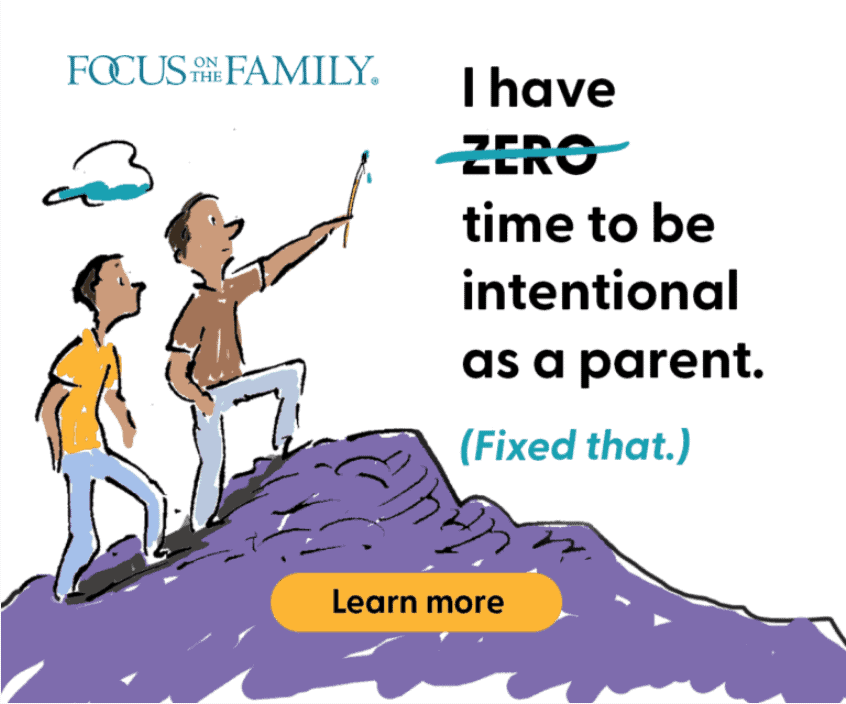While visiting his grandmother, a little boy came upon a large family Bible. Fascinated, he turned the pages until something fell out onto the floor — a leaf that had been pressed between the pages many years earlier.
“Grandma, look what I found,” the boy called out. “It’s Adam’s suit!”
A prized possession, the family Bible usually contains a history of key family events and often features classic paintings of popular stories such as Moses’ burning bush or David facing Goliath. You might even find a few treasures from the past, such as a record of births and baptisms, notes in the margin from an ancestor or “Adam’s suit.”
Some people see the Bible as a great work of literature; some consider it a historical chronicle of the Jews and early Christians, while still others read it as God’s supernatural revelation to humanity. In truth, the Bible is all these things and more. It’s a light that dispels the darkness of deception and reveals the truth. It’s a compass that points us on the right path. It is, quite simply, the Word of God. That’s why we must help our children develop a Christian view of the Scriptures. We must stress three important realities:
- The Bible came from God. Humans penned the words of the Bible under God’s inspiration.
- The Bible is truth. Like a flashlight, the Bible provides clarity in every area where it shines its light. It tells the truth about God, the truth about humanity and the truth about our redemption in Jesus Christ.
- The Bible is our guide. Like a compass, the Bible provides direction for our spiritual journey and helps us navigate the roads of life.
The activities and discussion questions on the following pages will help your children explore these realities of Scripture and discover a deeper appreciation of the Bible’s importance for their lives.
Key Points
- The Bible came from God.
- The Bible is true.
- The Bible is our guide.
Family Memory Verse
2 Timothy 3:16
“All Scripture is God-breathed and is useful for teaching, rebuking, correcting and training in righteousness.”
Scripture Study
For a more in-depth study on the purpose of family, read these Bible verses:
—Kurt Bruner
Preschool Activity
School-Age Activity
Tween Activity
Talk With Your Teen
Dinner Talk
Preschool Activity
Is It a Fairy Tale?
Introduce the truth and reliability of Scripture by sharing the difference between stories that are made up and the narratives of Scripture that explain who God is and what He has done.
Tell your child a fairy tale you remember from childhood. With your child, illustrate the story by drawing images in the air to make pretend pictures. Explain that fairy tales are fun and exciting, but they are not real.
Then share a story from Scripture. Tell the Bible story in an excited tone and use animated facial expressions and body movements to act out the story. Afterward, give your child a hug so he can feel your embrace while you explain, “That story is real, just like you and me.”
Have your child ask the following questions during the week: “Is this pretend like a fairy tale?” or “Is this true like a Bible story?” Together, identify the answer to reinforce the concept that God’s Word is true.
—D’Arcy Maher
School-age Activities
‘Do You Think That Really Happened?’
When reading the Bible together, especially when reading a particularly
miraculous account, I asked my son, “Is this true?” or “Do you think that really happened?” In a
world full of superheroes and fairytales, these questions, and the discussions that followed,
reinforced that we can trust the Bible because it is a true account of God’s relationship with
humanity.
—Amber Pike
God’s Word Is True for You
After sundown one evening, turn on a radio and set it to a barely audible volume. Lead your child to another area of the house and turn on a flashlight and turn off all the lights. Next, ask your child to listen carefully for the low radio, and have her use the flashlight as you both walk through the house to find the noise.
Afterward, point out that the flashlight helped her see where she was going. Ask: “What would have happened if you didn’t have the flashlight?” Your child may talk about tripping, bumping into things, getting lost or being afraid. Explain that God’s true Word guides us and lights our path much like the flashlight did when she navigated through the house.
Now, let your child change the location of the radio and watch you go on the hunt!
—Suzanne Hadley Gosselin
Tween Activities
An Archaeological Find
Ask your tweens: “If, in 100 years, an archeologist were to dig up items that belonged to our family, what three items would best show that you were real?” Explain that for centuries people have dug around in the Holy Land where Abraham, Solomon and Jesus walked. By getting their hands dirty, these archaeologists have discovered that the people and places described in the Bible were real. Even this year, archaeologists finished excavating a wall buried under Jerusalem that they say dates back to the time of King Solomon and matches a structure mentioned in the Bible (see 1 Kings 3:1).
Introduce Ray Vander Laan, a popular Bible history teacher who uses biblically significant locations as backdrops for his video series.
—Jesse Florea, Clubhouse magazine editor
Bible Story Burnout
By the time our children reached middle school, they had heard the same popular Bible stories at Sunday school, children’s ministry events and home, over and over again. It was time to help them take the next step, so we focused on helping them learn to meditate on the stories and principles in God’s Word. After all, biblical literacy is not just knowing God’s Word, but also using it to change our thinking, actions and character. Here is what we asked them to do:
- Listen to the story to identify an attribute of God. In the story of Jonah, for example, they might see God’s mercy.
- After identifying the character trait, think about where else in Scripture God demonstrated that attribute. (For the quality of mercy, we might think of the Cross, Jesus’ healing miracles or Rahab’s story.)
- Lastly, remember a time when God has shown that attribute to you or someone you know.
This method helped our kids imitate the character of their Savior, not just blindly follow commands, as they grew to adulthood.
—Rebecca Page
Talk With Your Teen
Teens often turn to media, friends or music for answers to life’s big questions and for direction regarding their big decisions. By pointing your teen toward the compass of God’s Word, you will give him the surest tool for navigating life.
Help him understand the relevance of God’s Word by discussing the following questions:
- Have you ever heard the Bible described as “just a bunch of myths”? How would you respond to that comment?
- If we both wrote a 10-page paper on the same topic, do you think we would agree on every point? What does that say about the amazing consistency of the Bible when scholars believe 40 different people wrote it over the course of 1,500 years?
- Even if you believe in the consistency and authenticity of the Bible, do you sometimes struggle to see how it is relevant today? [Read Matthew 6:25-34.] What specifics did Jesus mention about how to live life well? How do these verses show that the Bible’s teachings are still relevant to modern life?
Psalm 119:105 says, “Your word is a lamp to my feet and a light for my path.” Talk regularly with your teen about what you’re learning from your times in the Word. These conversations will show your teen how much you value Scripture — and will demonstrate how he can find answers and direction for his own life.
For a more in-depth study regarding the validity of the Bible, consider reading Josh McDowell’s The New Evidence That Demands a Verdict.
—Greg Stier
Dinner Talk
Movies, television shows, books — most of the stories your children absorb have been spun from someone’s imagination. Even “true” stories are not always entirely factual. With the media often blurring the lines between fact and fantasy, it can be difficult for our children to know what’s true and what isn’t. How can they know that the Bible is true?
Discuss the following questions with your kids:
- How can you tell the difference between an imaginary story and a true story?
- What’s your favorite movie? Is it true? (Even if a story is based on a true incident, talk about how movie writers change things to make a better story.) Where do movie writers get their ideas?
- What is your favorite Bible story? Is it true?
- Who wrote the Bible? Where did these writers get their ideas? (Explain that men wrote what the Holy Spirit told them to write.)
- What is the difference between a good story from a book and an event in the Bible?
- Is it possible to know for certain that God’s Word is true? How?
—Crystal Bowman























